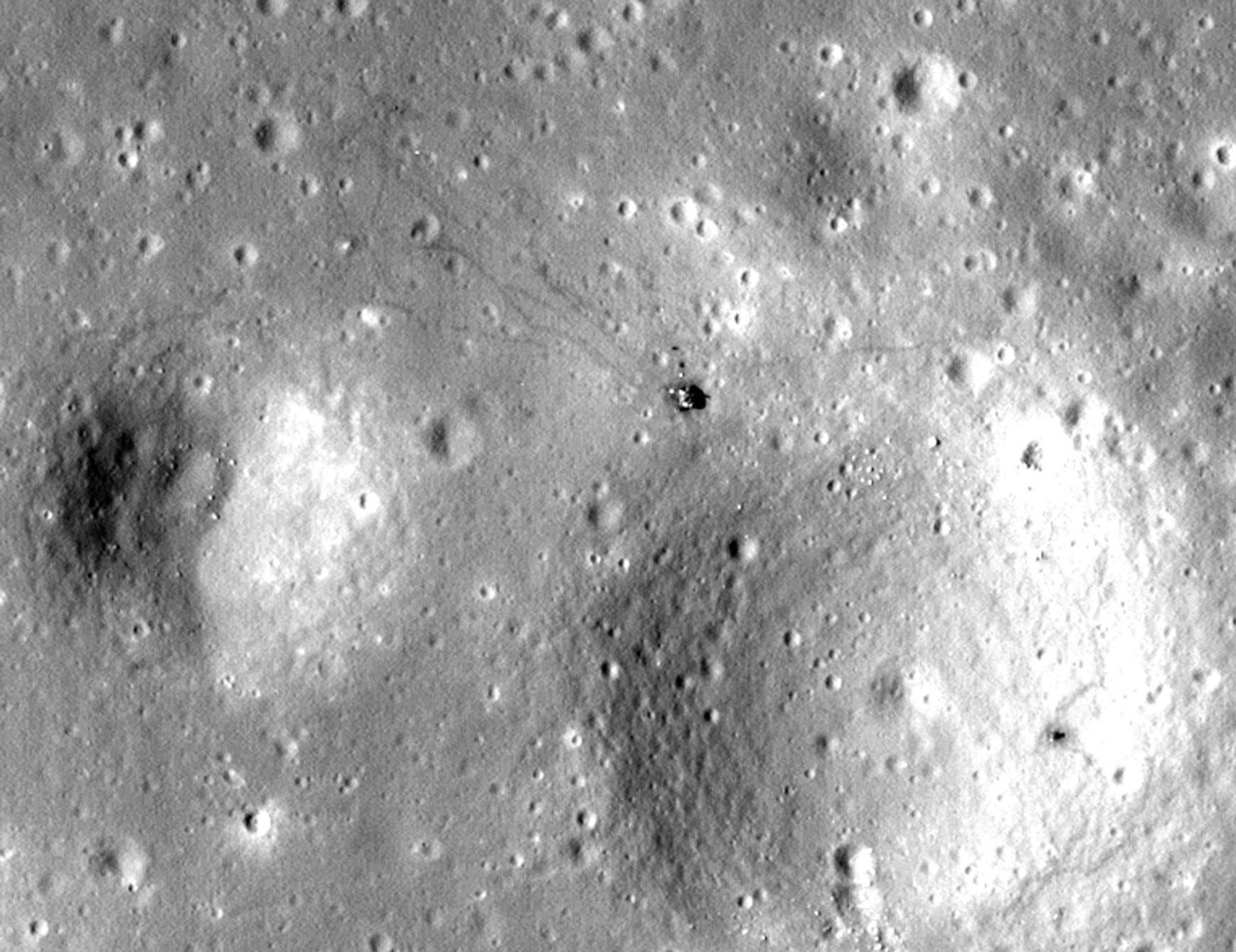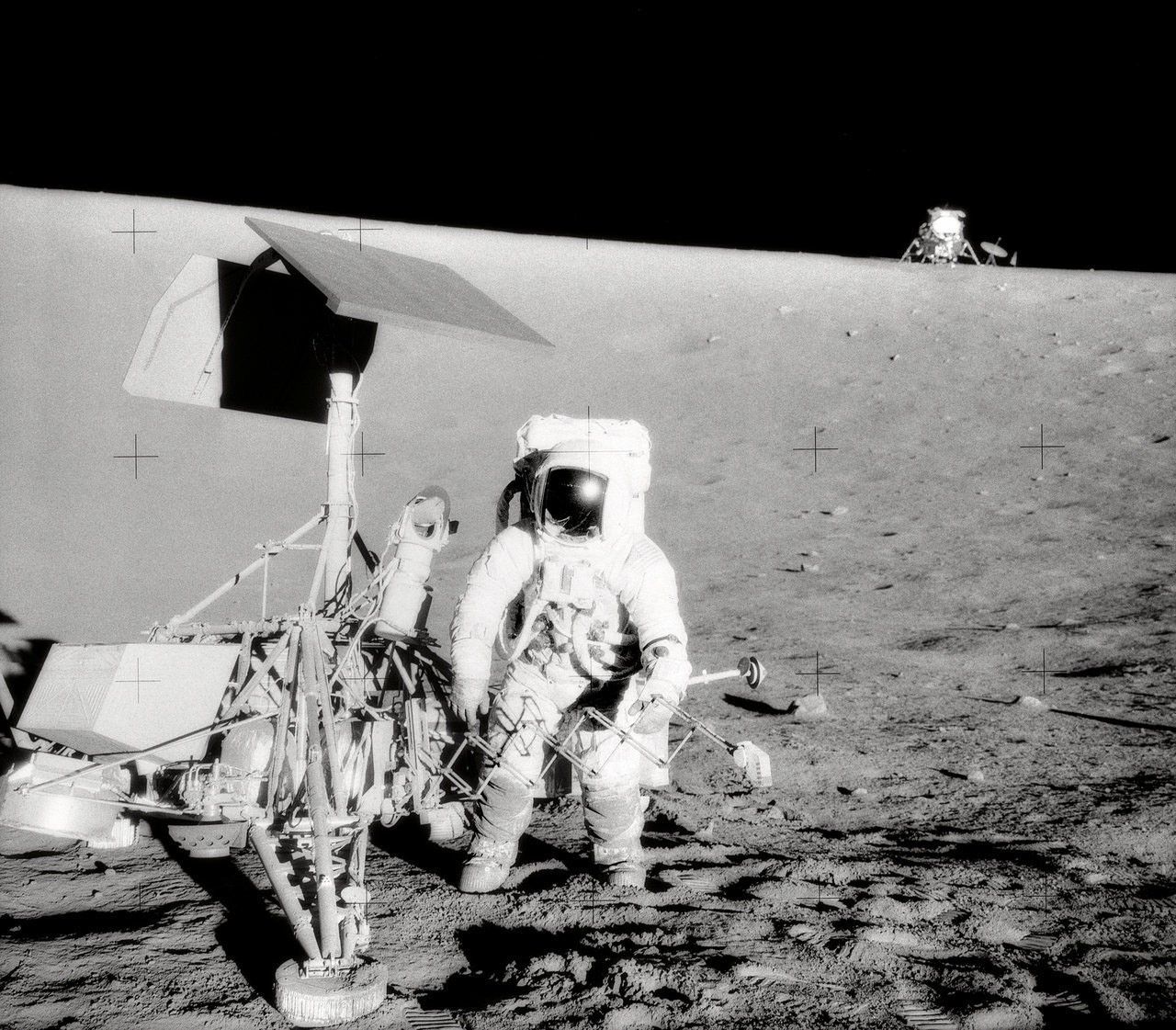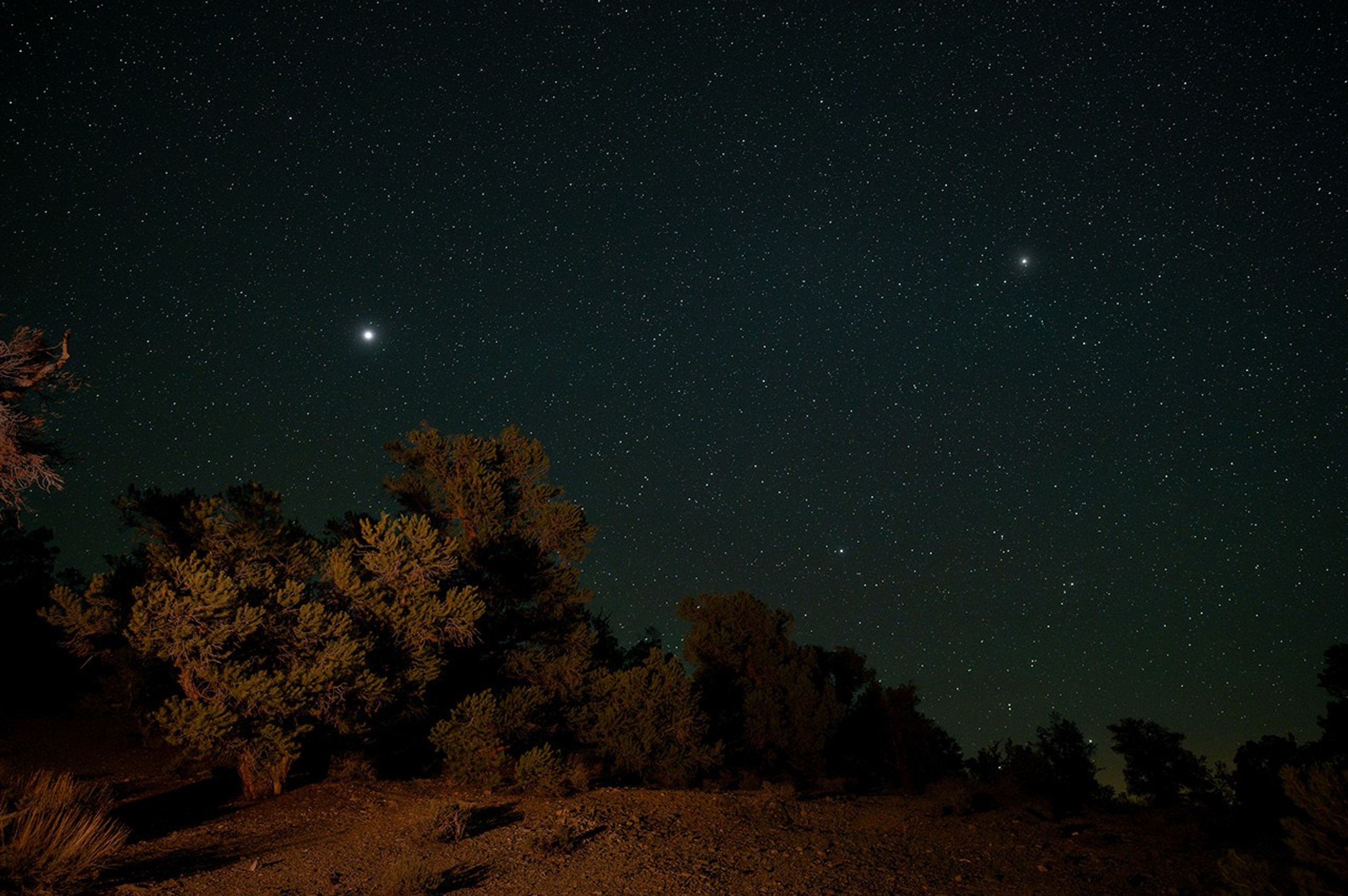Before astronauts ever landed on the Moon, Soviets and Americans both sent fleets of robotic spacecraft to scout the way. In the American program, first came the purposefully-crash-landing Rangers, then the Lunar Orbiters, all of which sent some of the earliest dispatches about what people could expect to find on the Moon's still-mysterious surface. Among the most ambitious of these robotic reconnaissance missions were the Surveyors, which proved it was possible to perform a soft landing on the Moon — and survive long enough to send word home.
Surveyor 3 landed on April 20, 1967, in Oceanus Procellarum, the "Ocean of Storms." It alighted in a small crater about 650 feet (200 meters) across, which was later named Surveyor crater in honor of its alien visitor from Earth. The lander transmitted more than 6,000 pictures of the surrounding terrain. It also scooped up and analyzed lunar soil, which allowed scientists to determine that it had a consistency similar to wet sand, solid enough to allow the upcoming Apollo missions to land.
Surveyor 3 continued to operate for several days. Controllers at NASA last made contact on May 4, 1967, two Earth days after the lunar night began and left the solar-powered spacecraft in the dark.
For two-and-a-half years, Surveyor waited in the unbreakable lunar silence. Then, on Nov. 19, 1969, the Apollo 12 mission demonstrated the lunar module's capability to make a pinpoint landing. Astronaut Charles "Pete" Conrad Jr. set the craft down on the edge of Surveyor crater, just 170 yards (155 meters) from the Surveyor spacecraft. After a short hike, he and fellow astronaut Alan Bean walked right up to the faithful robotic scout.
Human beings and their mechanical forerunner had met on another world. It was the first and only time this has ever happened. So far.
Human beings and their mechanical forerunner had met on another world. It was the first and only time this has ever happened. So far.
The astronauts removed parts from Surveyor 3, including the soil scoop and camera system, and brought them back to Earth. Scientists were then able to study the effects of years of exposure on the Moon's surface. You can see part of Surveyor's scoop today in a display at NASA's Jet Propulsion Laboratory in California.
Almost 45 years later, a powerful camera aboard the Lunar Reconnaissance Orbiter, another robotic moon explorer still operating today, imaged the landing scene in Oceanus Procellarum. In these pictures it's possible to pick out the Apollo lander, astronaut footpaths, and Surveyor 3, still carrying out its long, silent vigil in the Ocean of Storms.



































